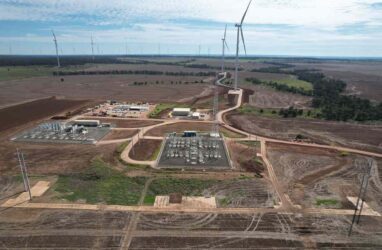Feed aggregator
VCM Report: KSET liquidation sparks sell off in voluntary carbon spots and futures
Bird flu infects penguins at famous wildlife haven
Carbon utilisation and removal firm launches new DAC unit for agriculture
US DOE offers $425 mln towards clean energy production, decarbonisation in former coal communities
Exchange to imminently launch CORSIA, REDD+ voluntary carbon futures
Russia-Ukraine war to trigger cropland expansion worldwide, study says
Sperm whale dies after being stranded on Florida beach
Police and wildlife officials were unable to rescue the animal because of high winds and surf in Gulf of Mexico waters
A sperm whale who became stranded on a Florida beach over the weekend has died, state’s fish and wildlife conservation commission said in a statement on Monday.
The case was an urgent one for animal preservationists because sperm whales are classified as an endangered species.
Continue reading...BofA eyes EU carbon trading growth -Bloomberg
Overlooked umbrella species could better inform conservation programmes, study finds
Almost half of cane growers sceptical of science behind laws protecting Great Barrier Reef
Review found ongoing ‘mistrust’ among farmers, including many who remain unconvinced by need for pollution regulations
A review of the Queensland government’s Great Barrier Reef protection regulations has found that almost half the affected farmers still believe there is little or no scientific evidence to support pollution reduction rules.
The laws, passed in 2019, were based on scientific advice that limits on sediment and chemical runoff were needed in the reef catchment, amid concerns about water quality.
Continue reading...UK govt buys land for new nuclear power projects
Euro Markets: Midday Update
Greta Thunberg joins climate activists blocking Swedish parliament – video
Greta Thunberg accused Sweden of being 'very good at greenwashing' as she staged a protest along with 50 other activists outside her home country's parliament. The activists sat outside Sweden's government building in Stockholm in an attempt to stop politicians from getting to work. She said climate protests had often 'fallen on deaf ears' and 'we're still moving in the wrong direction' globally. The action came on an important day for the Swedish government, with the prime minister, Ulf Kristersson, and a numerous key figures in Brussels for its official flag-raising ceremony outside Nato headquarters after being members last week
Continue reading...New York reconsiders sovereign debt rules as emerging economies push for relief to fund nature, climate
Greta Thunberg joins climate protest blocking Swedish parliament
Activist accuses Sweden of being ‘very good at greenwashing’ as group sits outside building’s main entrance
Greta Thunberg has accused Sweden of being “very good at greenwashing” as she staged a protest along with about 50 other activists outside her home country’s parliament.
The activists – who she said were acting as a group of concerned, largely young individuals rather than representing a particular organisation – sat outside the main entrance to Sweden’s government buildings in Stockholm on Monday morning in an attempt to stop politicians from getting to work.
Continue reading...Protesters to hold mass trespass of Cirencester Park over charging plans
Right to roam campaigners organise demonstration amid anger at Bathurst Estate’s introduction of £4 fee to visit park
Hundreds of people are expected at a mass trespass of Cirencester Park in protest against the introduction of charges and electronic gates for pedestrians, joggers and cyclists.
Local people are fighting the charges, the first in 329 years since the landscaped parkland, part of the 6,300-hectare (15,500-acre) Bathurst Estate, was established beside the Cotswolds town.
Continue reading...China urged to provide more support for CCS, carbon markets
Experts underscore supply-demand imbalance across new generation of voluntary carbon credits
Major Korean utility to pursue energy efficiency projects for Paris-aligned carbon credits
States need to do a lot more in race to 82 pct renewables, because capacity scheme is not enough
The post States need to do a lot more in race to 82 pct renewables, because capacity scheme is not enough appeared first on RenewEconomy.




